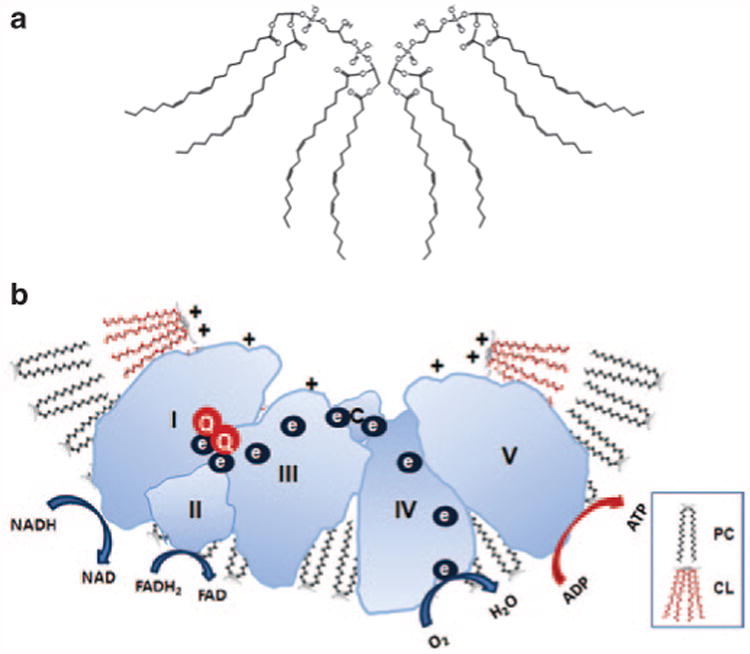Figure 2.

Cardiolipin promotes membrane curvature to optimize electron transport chain. (a) Cardiolipin (CL) is a dimeric phospholipid with a small acidic head group and four acyl chains, thus giving it a conical structure. As a result of its conical shape, CL exerts lateral pressure on a membrane containing other phospholipids such as phosphatidylcholine (PC), and results in membrane curvature. (b) CL rafts on cristae membranes allow the respiratory complexes to form supercomplexes that reduce the distance between redox partners. Besides providing a platform for the aggregation of the respiratory complexes, CL is also thought to serve as a proton trap on the outer leaflet of the inner mitochondrial membrane to allow rapid lateral diffusion of protons to the ATP synthase with minimal changes in the bulk phase pH. ADP, adenosine diphosphate; ATP, adenosine triphosphate; FADH2, reduced flavin adenine dinucleotide; NADH, reduced nicotinamide adenine dinucleotide.
